Bonsai trees come in a wide range of shapes and sizes, depending on the species and how they’re grown. Some can be as small as one inch, while others may reach over seven feet tall, depending on the type of tree and the gardener’s preference.
The size of a bonsai is determined by the Bonsai master or gardener, who can control whether the tree grows up to 80 inches or stays as small as one to three inches. Bonsai trees are categorized by size, with the smallest no larger than a seed and the largest requiring multiple people to move.
Though bonsai books may vary slightly in how they classify tree sizes, the system is generally well-established. Instead of relying solely on photographs, bonsai tree sizes are determined by both weight and height to enhance appreciation of their aesthetics.
In this guide, we’ll explore the different bonsai tree sizes and how big they can grow.
- Related article: Bonsai Care Tips
5 Key Takeaways on Bonsai Tree Size Classifications
Selecting the right bonsai size depends on factors like available space, maintenance capability, and experience level. Miniature bonsai are ideal for small spaces, while medium and large bonsai offer more design options but require different care levels.
Bonsai trees are classified into three main categories: miniature, medium, and large, with further subcategories based on their size and the number of hands needed to move them.
The smallest bonsai trees, like Keshitsubo and Shito, can be just a few inches tall and require meticulous care. They are often grown in tiny containers, such as thimbles.
These trees, including categories like Katade-Mochi and Chiu, range from 10 to 36 inches and are the most popular size for beginners due to their manageability and versatility for indoor and outdoor settings.
Large bonsais, such as Imperial bonsai trees, can grow up to 80 inches and require multiple hands to move. They are typically grown outdoors and offer more room for complex designs.
Bonsai Tree Size Classifications
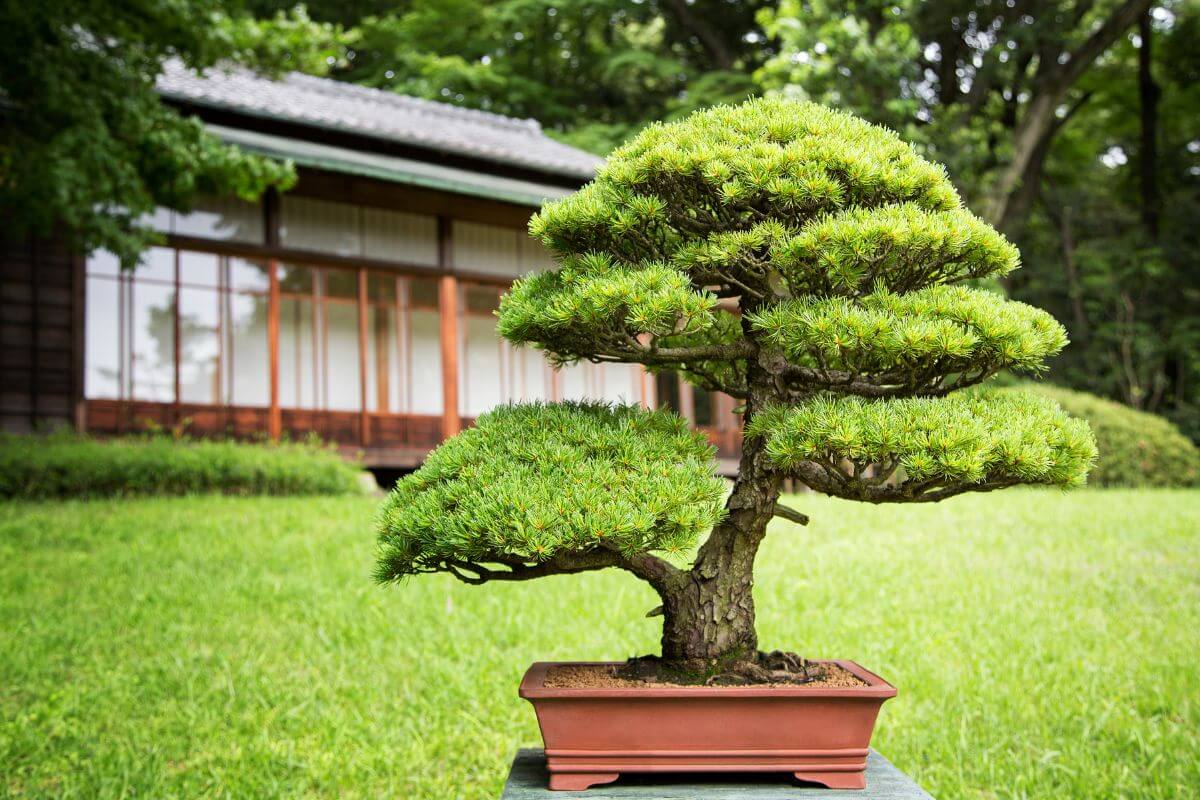
The largest Bonsai trees are classified as “Imperial Bonsai Trees” and they are named for the bonsai trees found in the Imperial Palace in Japan.
The tiniest size classification is known as “Keshitsubo”. Thanks to special techniques and artistry, these miniature trees can fit into objects as small as a thimble.
These classifications were established many centuries ago for different types of bonsai trees. Modern sizing charts may vary depending on the region where they are found.
The original ancient bonsai classification system was based on the number of hands that were required to move a tree and its container. Trees were classified as one-handed, two-handed, four-handed, eight-handed bonsai trees, and so forth.
Now there are three size categories used in the classification of bonsai trees
- Miniature Bonsai Tree
- Medium Bonsai Tree
- Large Bonsai Tree
Each of these classes has subcategories and each category will have specific measurements and required hands.
Not every bonsai tree will necessarily fit in a category. In fact, the classification of Bonsai trees is not an exact science, but more of an art.
Miniature Bonsai Trees
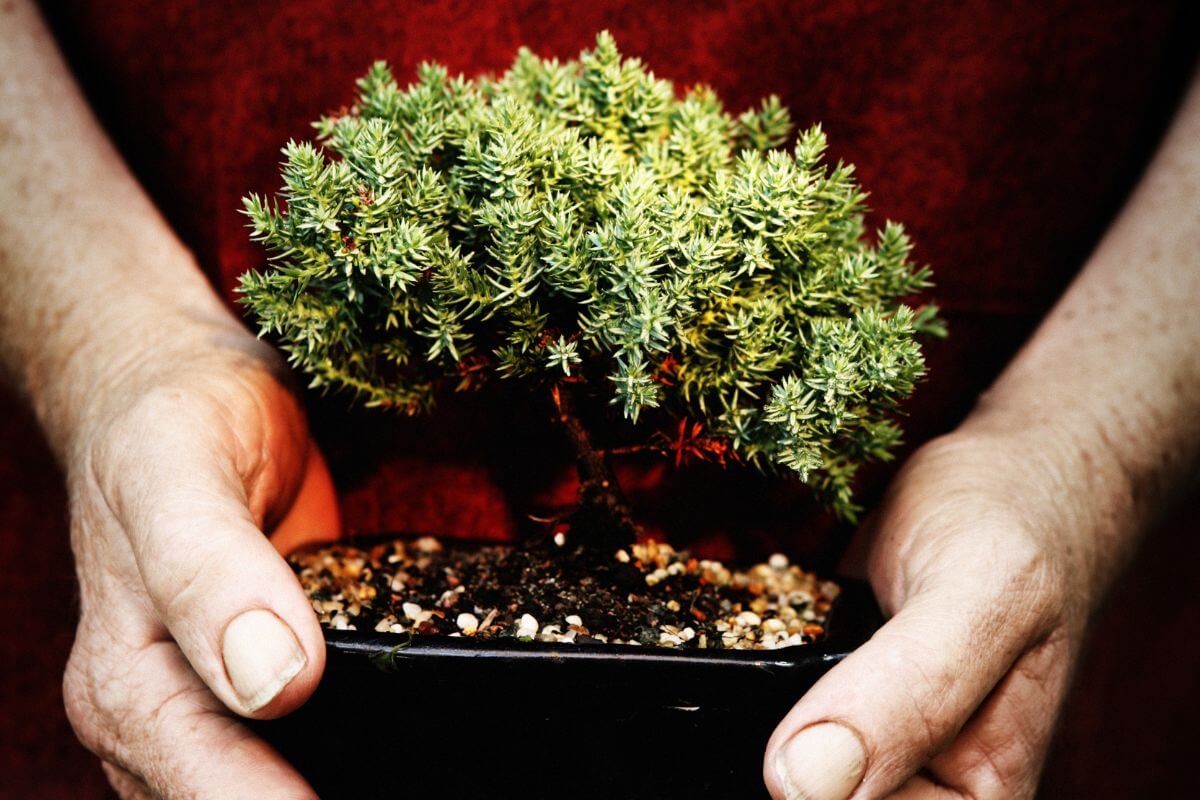
As previously stated, there will be some variations in the classifications of the smallest bonsai trees. The most common and well-known subcategories are:
- Keshitsubo
- Shito
- Mame
- Shohin
- Komono
Keshitsubo
The Keshitsubo is the smallest of bonsai tree sizes. They grow from one to three inches (three to eight centimeters). They are so tiny that you can hold them with two fingers.
Shito
The Shito Bonsai is also called the “fingertip” size. These bonsais grow between two and four inches in height (five to ten centimeters).
They are also called thimble bonsai trees because they easily fit into containers that are no larger than thimbles. On occasion, Shito and Shohin are interchangeable, but the difference between the two lies in the different techniques used to train them.
Mame
A Mame bonsai tree can grow from two to six inches (five and fifteen centimeters) and considered a one-handed Bonsai. Mame bonsais are small and can be moved with a single hand.
Occasionally, they may be grown in containers that are a bit larger than Shohin bonsais.
Shohin
The Shohin bonsai tree classification shares some characteristics with other bonsai categories, so it can be difficult to identify sometimes. These bonsais grow from five to eight inches in height or thirteen to twenty centimeters.
Also known as the Palm Bonsai, the Shohin fits in the palm of a hand. Shohin and Shito are utilized interchangeably as classifications, however, the technique used for training the bonsais is different for the two.
Komono
A Komono bonsai is a common miniature tree. It will grow to a height of between six and ten inches (fifteen and twenty-five centimeters).
This is the largest of the miniature bonsai trees that can be moved using only one hand.
Medium Bonsai Trees
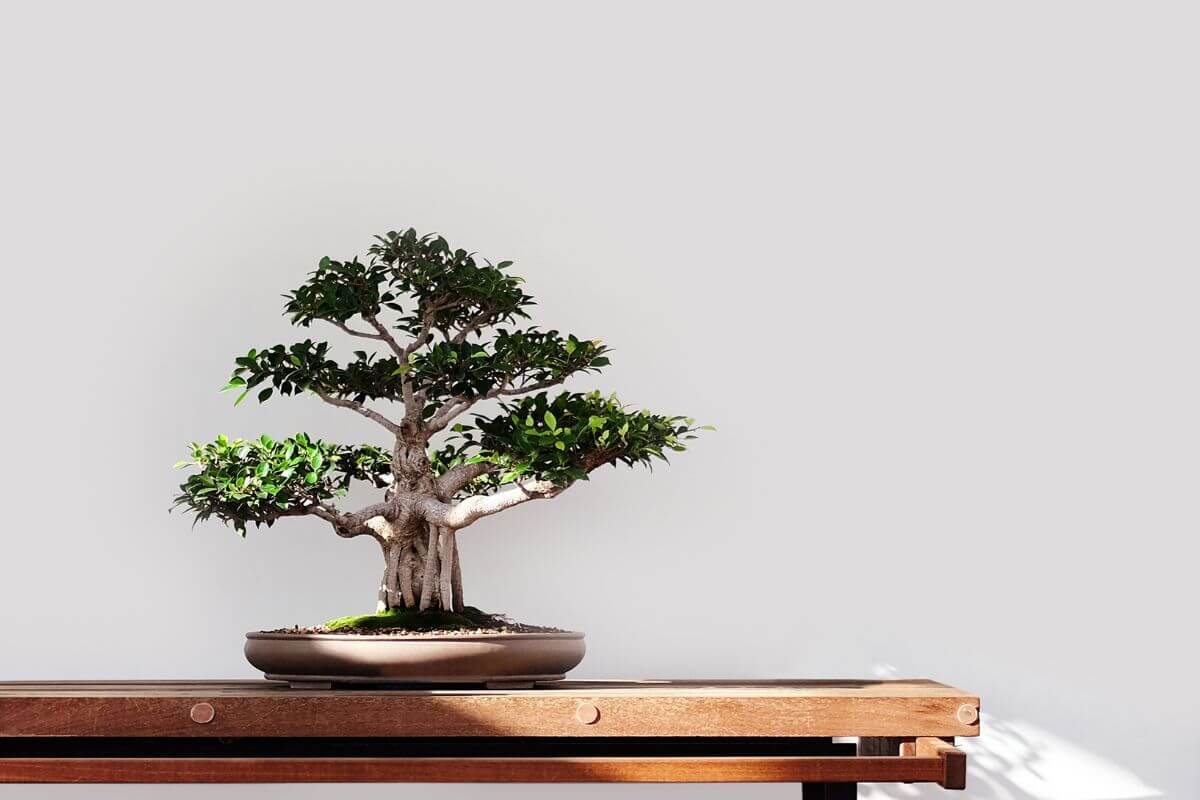
The medium bonsai trees are classified most often in these subcategories:
- Katade-Mochi
- Chiu/Chumono
Katade-Mochi
The Katade-Mochi is the largest bonsai tree that can be moved with one hand. These bonsais grow to heights that measure between ten and eighteen inches (twenty-five to forty-six centimeters).
This is probably the most popular of Bonsai sizes because it is easy to handle when caring for and training them.
Chiu/Chumono
Initially, the Chiu and Chumono were two different size classifications, but over time have become the same. These are two-handed bonsai trees.
They grow to heights between sixteen and thirty-six inches (forty-one and ninety-one centimeters). These two classification names are used interchangeably now.
Large Bonsai Trees
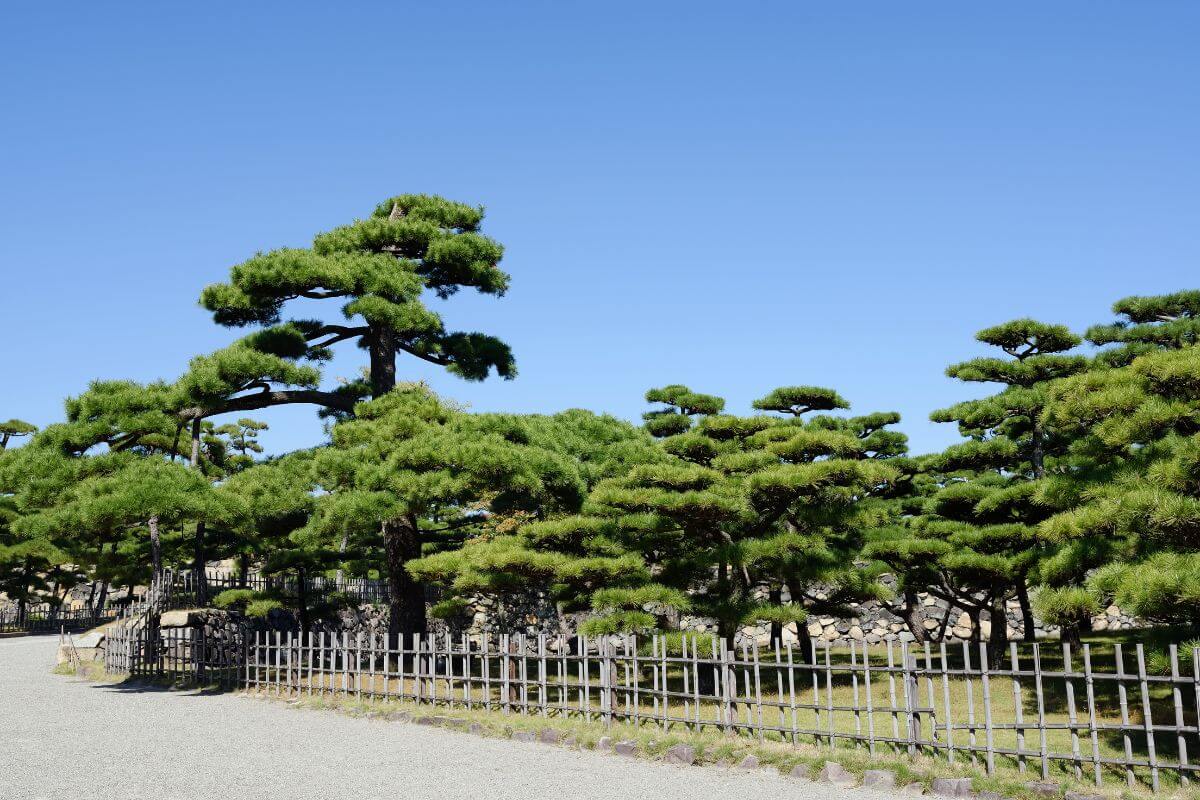
There are also different classifications when referring to large bonsais. The most common are:
- Dai/Omono
- Hachi-Uye
- Imperial
Dai/Omono
Over time, these two identifications, Dai and Omono, share the same definition and modern guidelines of tree size.
Among large Bonsai trees, these are the smallest trees, but they still require four hands to be moved. They grow to sizes that range from thirty to forty-eight inches (seventy-six to one hundred and twenty-two centimeters).
Hachi-Uye
The Hachi-Uye Bonsai is a large six-handed bonsai tree that needs six hands to be moved.
They grow to heights that range from forty to sixty inches (one hundred and two to one hundred and fifty-two centimeters).
Imperial
The Imperial Bonsai is the largest of bonsai trees. It is a regal tree, and this class of large bonsai grows between sixty to eighty inches (one hundred and fifty-two to two hundred and three centimeters).
These trees call the Japanese Imperial Gardens their home and require eight hands to be moved.
How to Care for and Grow Different Bonsai Tree Sizes
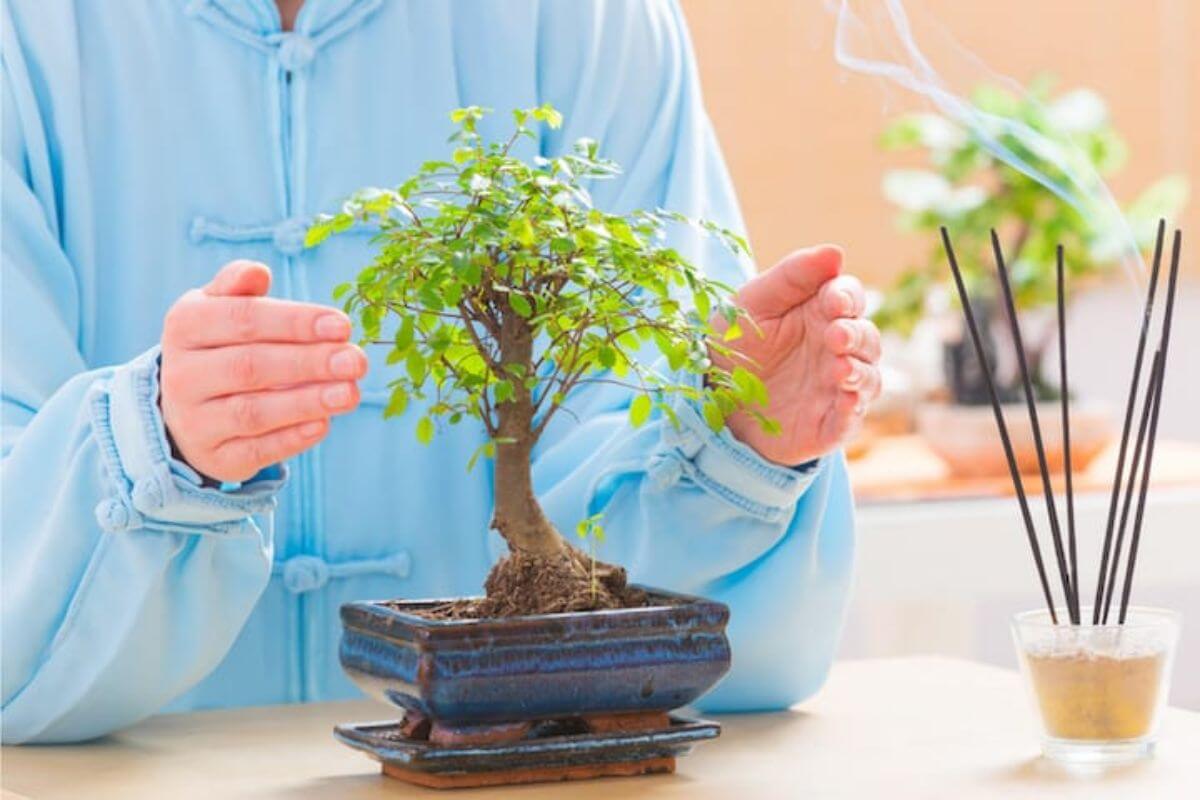
The eventual size of a bonsai tree is determined by the bonsai master or gardener. If you wish to train a bonsai, you should select the size of the bonsai tree you prefer before you choose the type of tree species.
Below are general guidelines for bonsai tree care, including pruning, training, and watering. Care guidelines are influenced by the size of the tree.
Care for Miniature Bonsai Trees
When choosing to grow and care for a miniature bonsai tree, know that it can feel like a demanding task. This kind of bonsai training is the most difficult when compared to working with larger trees.
Bonsai masters have a full understanding of tree growth in an environment that is restrictive. The number of branches on miniature trees is more limited, so those working with miniature trees will need to be creative when training the tree in the Bonsai art and aesthetic.
Despite miniature bonsais being the most difficult, many bonsai hobbyists still work to create one. These trees add beauty wherever they are placed, and even more so as an indoor bonsai tree.
Bonsai trees are great in small places, homes, or apartments where space is at a premium and there is no room for larger plants. They are also perfect as windowsill plants.
The small size of miniature bonsai trees means they are easier to handle and move around. They do not necessitate a turntable like larger Bonsais for ease of training. Pruning is easy in practically any space.
The most challenging aspect of training miniature bonsais is pruning branches, leaves, flowers, and fruit. Some types of trees are not ideal for miniature bonsais as they are almost impossible to scale down to the tiny sizes involved.
Attempting to train a miniature bonsai can result in a weak or unhealthy tree. These bonsais live in a very small pot, so the correct amounts of sun, water, and bonsai soil are crucial to survival.
These bonsais risk death with over or underwatering. The soil bed should be a bonsai mix for the best drainage. These mixes guarantee drainage and sufficient water retention for the health of the tree.
Designs should be kept simple because of the small size.
Care for Medium Bonsai Trees
Medium-sized Bonsai trees are the size range most often used for beginners. Nonetheless, the medium bonsai requires the same training and care as all bonsai trees.
One nice thing about medium-sized bonsais is that they can be grown inside or outside, depending on the species. The smallest of medium bonsais are still relatively easy to move around, so they do well in indoor décor.
Like all bonsais, they need the correct bonsai soil mix to guarantee drainage and sufficient water retention. They also require fertilization to provide the tree with adequate nourishment.
- Related Article: Bonsai Fertilizer Guide
Training a medium bonsai and scaling fruit, flowers, and branches is much easier than working with large or miniature bonsai trees.
To prune and scale a medium-sized tree well, a turntable is recommended so that you can inspect all parts of the tree, including the leaves, branches, trunk, and roots. Bonsai designs can be simple or more complicated depending on your taste.
Care for Large Bonsai Trees
Large bonsai trees offer less flexibility and require more work to keep the bonsai healthy. Training a large bonsai is difficult, but not as difficult as training a miniature version.
Large bonsais are usually cultivated outdoors where they enjoy more exposure to sunlight to grow healthily.
Due to their weight and size, they are rarely moved as they require numerous people to lift them. Many bonsai gardeners prefer to plant large bonsais directly in the ground instead of a pot or container.
Like all bonsai trees, large trees need the correct soil bed and sufficient sunlight. When planting in the ground, the soil must provide adequate drainage and aeration. Automatic watering systems can be used, especially in warmer climates.
Larger Bonsais are ideal for complicated designs because of their size. You can use many different techniques to create interesting shapes and patterns.
How to Choose a Bonsai Tree
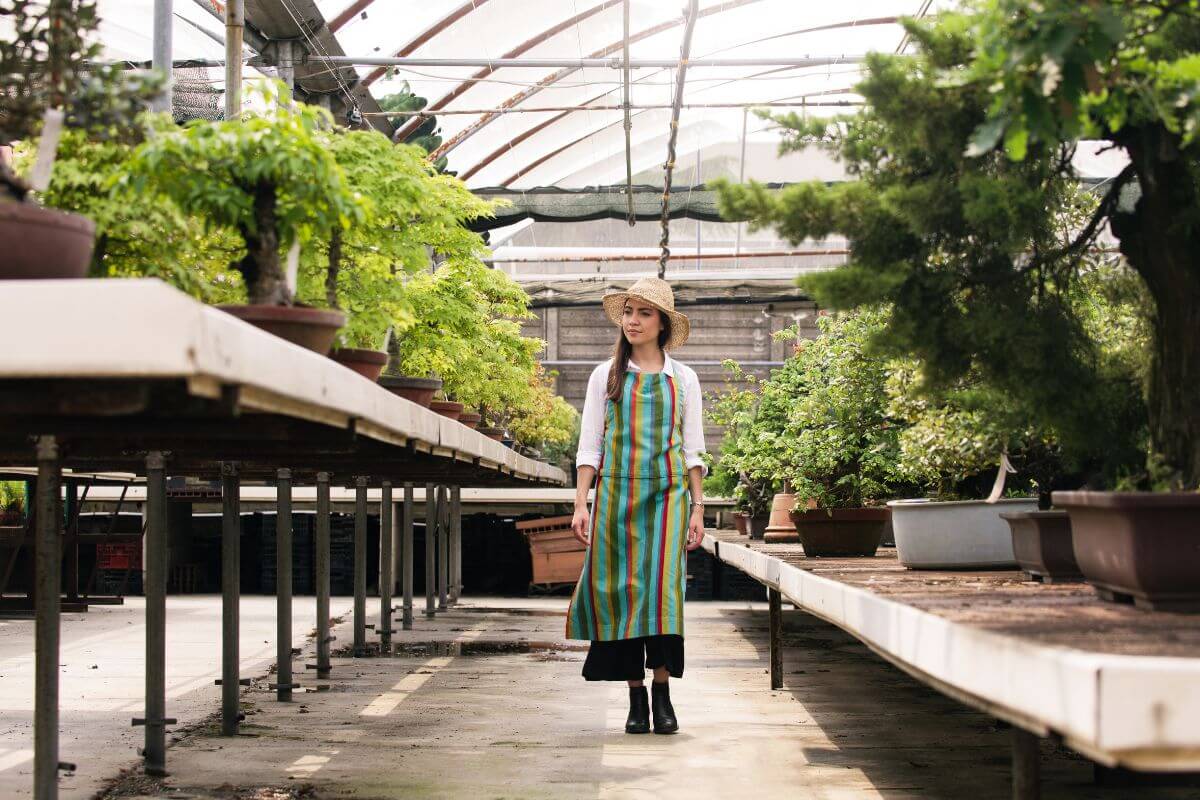
Once you have decided on the tree size you wish to care for, you will need to choose the tree species. This species should fit your way of life so that you have sufficient time to dedicate to it.
Below are factors that may influence your selection of trees for your bonsai collection.
Bonsai Cost
The least expensive option for a bonsai tree is to start from seed. Since bonsai seeds do not exist, you will be using a normal tree seed. The main disadvantage of growing a bonsai tree from seed is it’s a long process.
An alternative is to grow a bonsai from a bonsai cutting. Using a cutting is faster. This is a common method because you take a branch from a healthy bonsai tree. The new bonsai tree will share characteristics of the parent tree.
You can also purchase a bonsai. Typically, the older the bonsai, the more expensive it will be.
Indoor or Outdoor Bonsai
Decide first whether you want to locate the bonsai tree indoors or outdoors. When outdoors, bonsais exposed to freezing climates can die. Think about how much space you need if you winterize your tree.
If you have little space, consider a tropical bonsai. If you have a garage you can opt for a deciduous or evergreen tree.
Learn more about the Best Indoor Bonsai Tree Types and Overwintering Bonsai.
Your Bonsai Experience Level
If you are a beginner, select a bonsai species that is easiest to work with, such as Jade, Chinese Juniper, or Fig trees.
Considerations When Choosing the Bonsai Size
This bonsai size chart offers the benefits and considerations when choosing among the variety of sizes for bonsai trees.
| Miniature Bonsai Trees | Medium Bonsai Trees | Large Bonsai Trees |
| Ideal for small spaces | Great indoors | Best outdoors |
| Windowsills and balconies | Great for beginners | Can be planted in the earth |
| Flexibility in workspaces | Many tree species are optimal | Difficult to move |
| Simple designs | Need turntable for optimal care | Need good drainage, and watering |
| Attention to detail | Many design choices | Complex designs |
Bonsai Tree Sizes Final Thoughts
All in all, there are various things to keep in mind when selecting a bonsai tree size. It is important to remember that you cannot judge a bonsai by its size alone. Each has its own set of pros and cons.
A big tree does not necessarily mean a great one, nor does a small tree.
Here are other bonsai articles that you might like:

